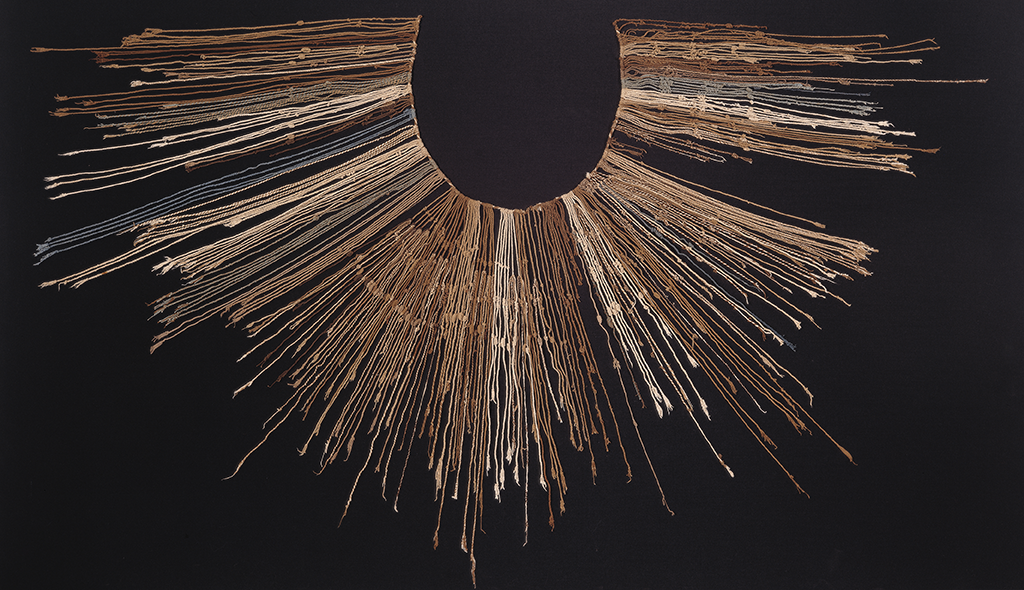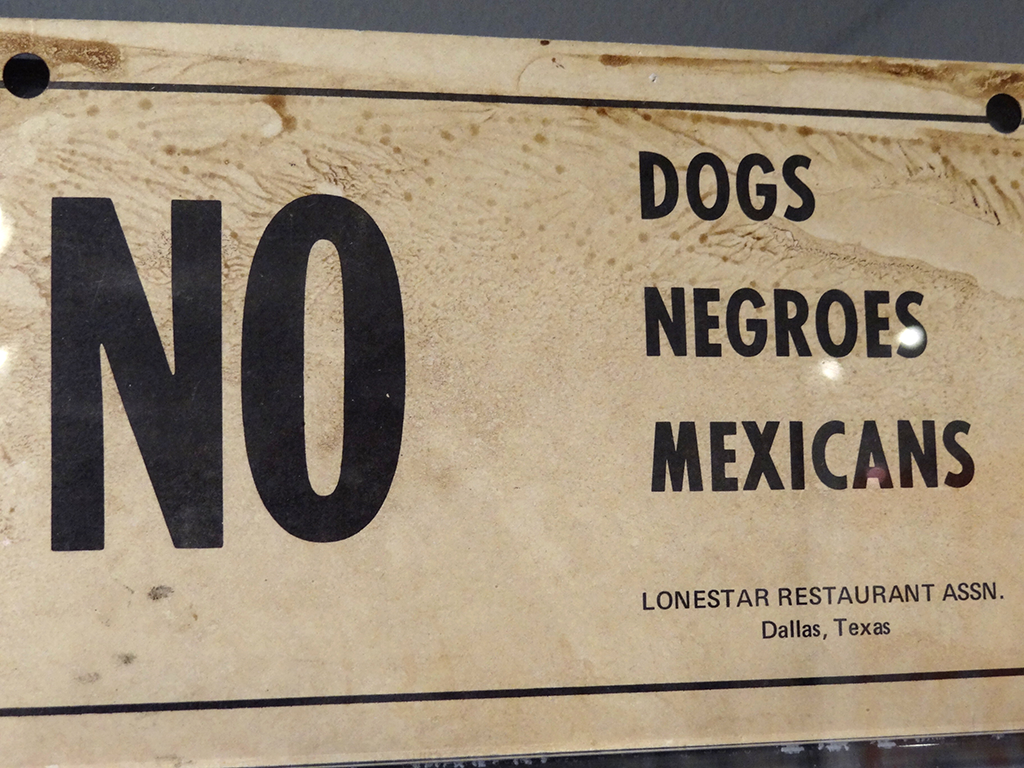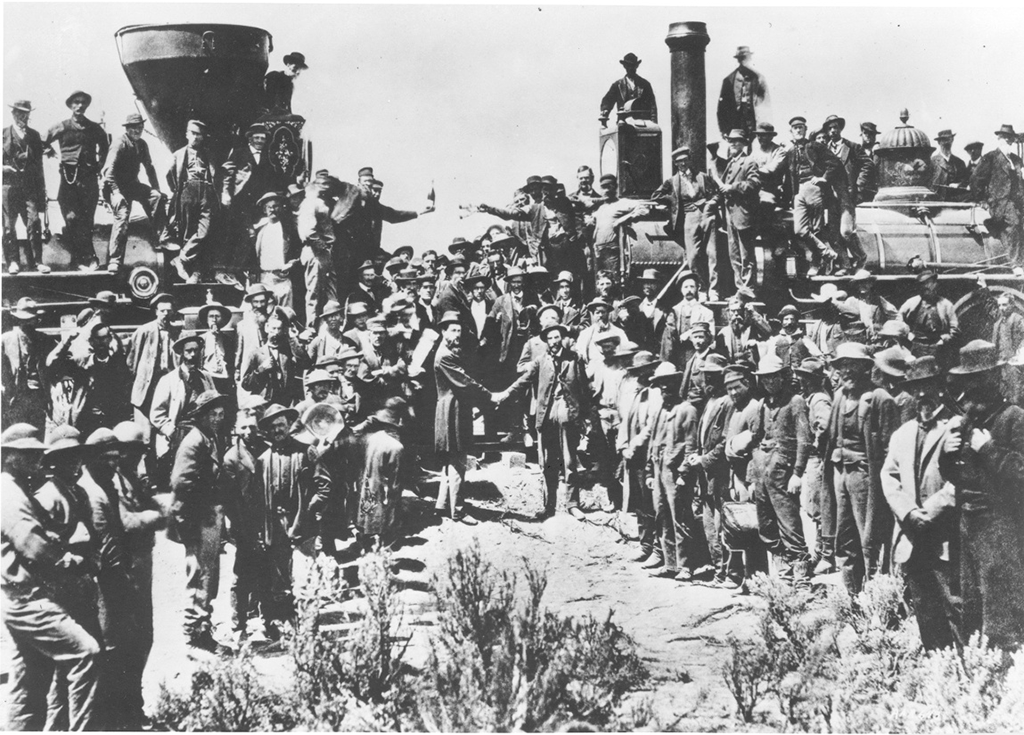How would you define history? Where would you go to find a historian? What do historians do, and why is their work important? The answers to these questions will help prepare you for the study of New Mexico History. And, as you’ll find, the study of history often generates more new questions than answers.
Welcome to New Mexico History
At its simplest, history is the study of past events and, on its face, inquiry into the past seems to be a clear-cut proposition. Since we cannot travel to the time and place that we want to learn about, we must rely on other types of information that have survived since that time. One must gather the sources that explain a certain past event or time period, and then use those sources as evidence to create a narrative, or tell the story, of that past moment. Traditionally, historians have favored the written word in their pursuit of the past. The term “prehistory” refers to people, societies, and/or civilizations that operated without the use of written language. Yet sophisticated societies, such as the Inca Empire in South America, thrived through oral tradition and the aid of other tools, like quipus, in order to keep administrative records. The existence of such non-literate societies poses problems when historians stick to written documentation. If history is the study of past events, the Inca people certainly experienced a rich past that merits examination. But, how do we study their history? The study of the past is not as straightforward as it seems at first glance.

In order to address such issues, historians incorporate a wide variety of source types into their repertoire. Oral traditions, archeological artifacts, artwork, photographs, films, and literature can help tell the story of past peoples. Yet, these types of sources, as well as written sources, all present certain problems. None of them provide a complete view of the past on their own. They are like pieces of a puzzle that need to be placed together in order to see the whole picture clearly. Also, they are subject to interpretation—they cannot speak for themselves. In order to piece together any historical puzzle, then, historians must ask analytical questions. How can we make sense of artifacts? In what ways have oral traditions changed as they have been told and retold over time? What distinct perspectives and biases are presented by the author of a letter or diary? What type of picture of a given moment in time did the author of a novel wish to portray? How can we make sense of “the truth” without leaving out important perspectives or ideas? Is it even possible to achieve objective historical truth?
Before addressing the question of historical truth, let’s consider who historians are. Hopefully, you think of your history teachers as historians, but the definition is much more extensive than that. In the broadest terms, historians are people who work to learn about, teach, write, and otherwise explain the past. In a sense, we are all historians because most of us, at the very least, have tried to find out the details of our own family histories. Others of us study major events of general interest, such as the U.S. Civil War, the American Revolution, the Mexican Revolution, or the rise and fall of the Roman Empire, just to name a few. Professional historians include people in a wide variety of jobs, including college professors, editors, curators, archivists, researchers, diplomats, and politicians, among others. What they share in common is academic training in the process of historical thinking. Historical thinking is the reading, analysis, and writing (or other types of production) necessary to tell complete stories about a given event in the past. Whether or not you consider yourself to be a professional or academic historian, the process of historical thinking is crucial to understanding the past.
To do history, one must locate, read or view, and critically evaluate a range of sources on a given event. It is never possible to gain a full picture of the past from a single source, and historians often find conflicting viewpoints within the various sources they examine. In other words, the pieces of the puzzle often tell contradictory stories, and each piece always presents a unique perspective. As we will see in Chapter 4, the Pueblo Revolt is one of the most contentious events in New Mexico History. Primary sources of the revolt are limited, and researchers have presented several competing interpretations based on essentially the same evidence. Among the factors that cause different historians to reach distinct and even conflicting conclusions from the same sources are their personal worldviews, their methods of reading and questioning sources, their rejection or acceptance of certain sources (such as oral histories), and their attempts to portray certain historical perspectives. In the case of the Pueblo Revolt, the narrative has been dominated by the voices of Spanish missionaries, governors, and settlers because their viewpoints have been preserved in existing documentation. The perspective of the Pueblo people, however, has been long neglected due to the fact that they did not write their ideas on paper.
Historical Thinking
WITH BRANDON MORGAN, PH.D.
These various issues complicate our ability to reach the objective historical “truth” of any given event. For much of the late-nineteenth and early-twentieth centuries, academically trained historians aspired to the “noble dream” of objectivity. Their belief was that through careful study and research, investigators could transcend their own belief systems and their social and political worldviews. In other words, early twentieth century historians generally thought that they could step outside of the types of issues discussed above. In recent years, however, expectations have shifted. Many researchers now realize that it is impossible to escape subjectivity, that their own place and time in the world creates a certain lens through which they view the past.
As Matthew Restall, a historian of early Latin American history, has pointed out, our powerlessness to escape our own subjectivity has largely discredited truth “as a concept relevant to historical investigation.” The thought that absolute or objective truth may be completely beyond reach can be quite disheartening. But, as Restall suggests, “In the realm of subjectivity things can get really interesting.” We need not throw our hands up in the air and declare that the study of history is invalid. On the contrary, through the comparison of different ideas and perspectives provided across a wide variety of sources we can reach new insights and clearer understandings of past events. The best histories are those that recognize their own limitations, draw on evidence from critical readings of historical sources, and are well-reasoned and argued. Because history is like piecing together a puzzle, it is always based in argument. History is never simply the listing of names, dates, or ideas. Reliance on argument and perspective makes the study of history particularly powerful because it requires us to rethink our own assumptions and step into the shoes of others. And, as Restall concludes, “There are always multiple narratives of any historical moment, but that does not mean that as interpretations they cannot tell us something true.”
“The past is a foreign country.”
Drawing on a line from L. P. Hartley’s The Go Between, David Lowenthal famously argued, “the past is a foreign country.”2 Even if we focus on the history of our own hometown or region, our forebears that lived there a century or two ago had different ways of viewing the world around them. Attitudes and actions that were socially acceptable to them may no longer be acceptable to us. We must take such differences into account when we study history. It would be a “mistake to make the past a place where people just like us think about things as we think about them now and do things just as we do them now.” Richard White, historian of the American West, has also emphasized that historians themselves are “historically situated; they write from their own time and place, and this influences what they write.”3 In the introduction to his study of transcontinental railroad corporations, White described his own relationship to his topic. He lived in Palo Alto, California, during the internet boom of the 1990s, and that experience caused him to consider similarities between that moment in time and the rise of transcontinental railroad companies a century earlier. By reading historical sources, whether primary or secondary, for the author’s own relationship to the subject, we will be better able to understand the strengths and limitations of the interpretations he or she presents.
Finally, as we study history, we should consider the reasons why it is always being rewritten. New history books constantly hit the shelves (or app stores). Part of the reason for this is that we still do not have very clear pictures of many historical events. Historians are constantly working to fit more pieces of the puzzle together. Researchers sometimes find previously unknown information that provides new insights or that even leads to the total reevaluation of what we know about the past. Most often, however, new histories are published as historians continue to debate the interpretations and conclusions we can reach based on our information. As with other fields in the humanities, social sciences, or sciences, these debates are the process by which we fully understand past events.

Historians’ ideas about historical revision can be grouped into three general schools of thought. The first maintains that rewriting history helps us to create stronger accounts of the past that move increasingly closer to the objective truth. These historians have not lost faith in the idea that objective truth exists, even if we can never quite reach it. On the opposite side of the issue are those who believe each new generation or cultural group will necessarily rewrite the past because each sees their past differently. These scholars hold to the importance of evidence as the basis of historical writing, but they believe that “different truths exist for different groups.” A third group of historians takes cues from both of these perspectives. These scholars accept the idea that different sets of people view the past differently, but they believe that a close study of varied viewpoints will help us to fashion a clearer picture of the past.
“History is always a negotiation between past and present.”
As you may have guessed, I fit into this third group. I come to the study of New Mexico’s history as a fellow resident of the American West, but as an outsider. My family roots do not go back to the region’s indigenous peoples nor to the early Spanish conquistadores. I spent some time in the Albuquerque and Santa Fe areas in the early 2000s, however, working with immigrant Spanish-speaking populations. That experience drove me to study the history of Latin America and the American West from the perspective of the groups of people that have historically inhabited and shaped the U.S.-Mexico Borderlands. Since my days in graduate school, I have taught New Mexico History numerous times. It is one of my favorite courses to teach because I’ve lived in the Albuquerque area now for about a decade, and New Mexico is a crossroads where my research interests—the histories of indigenous peoples, Latin America, and the United States—all meet. Hopefully that brief description will help you to understand where I am coming from as an author. In the chapters that follow, I’ve attempted to incorporate as many different perspectives as possible into the historical narrative. I firmly believe that there is no such thing as New Mexico History in the singular; instead, I try to capture New Mexico’s histories. I also attempt to outline the major historical debates that continue to rage about the state’s past. As you study the “Land of Enchantment,” think about the ways in which you relate to and think about its past and its peoples. What sides do you take in these historical debates, and why? In what ways do New Mexico’s histories inform your experience in the present? As Richard White noted, “History is always a negotiation between past and present.” Or, in the words of William Faulkner, “The past is never dead. It’s not even past.”
